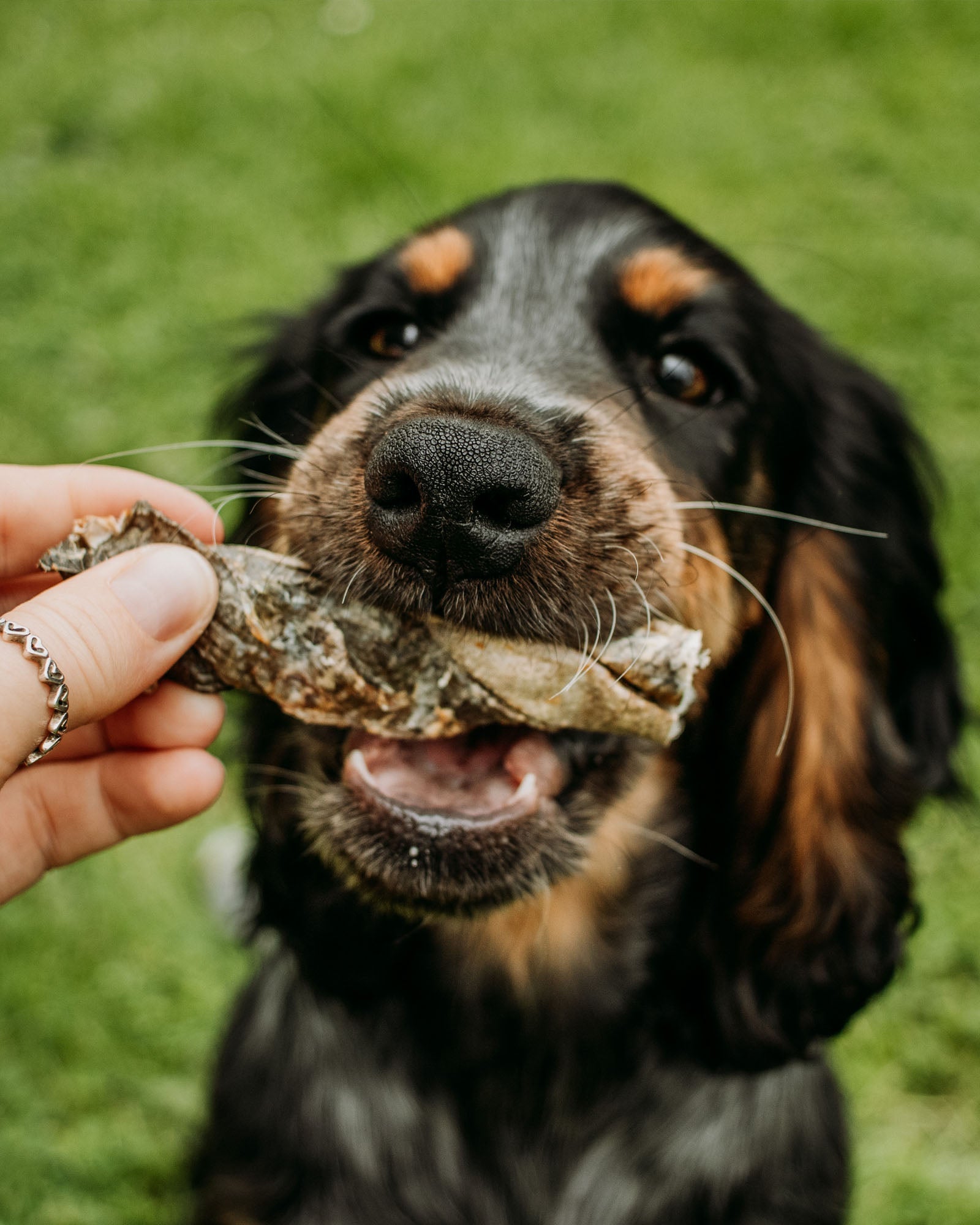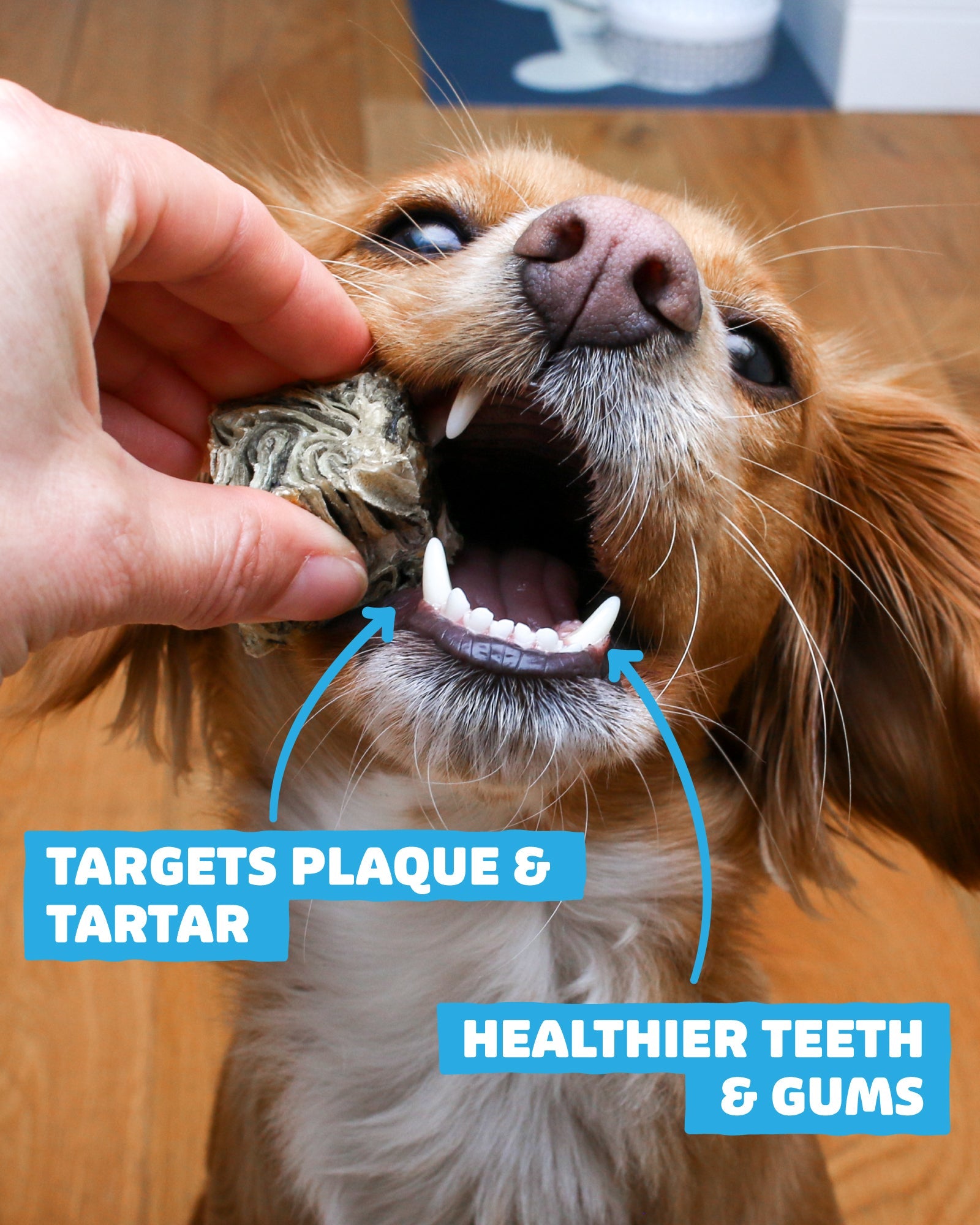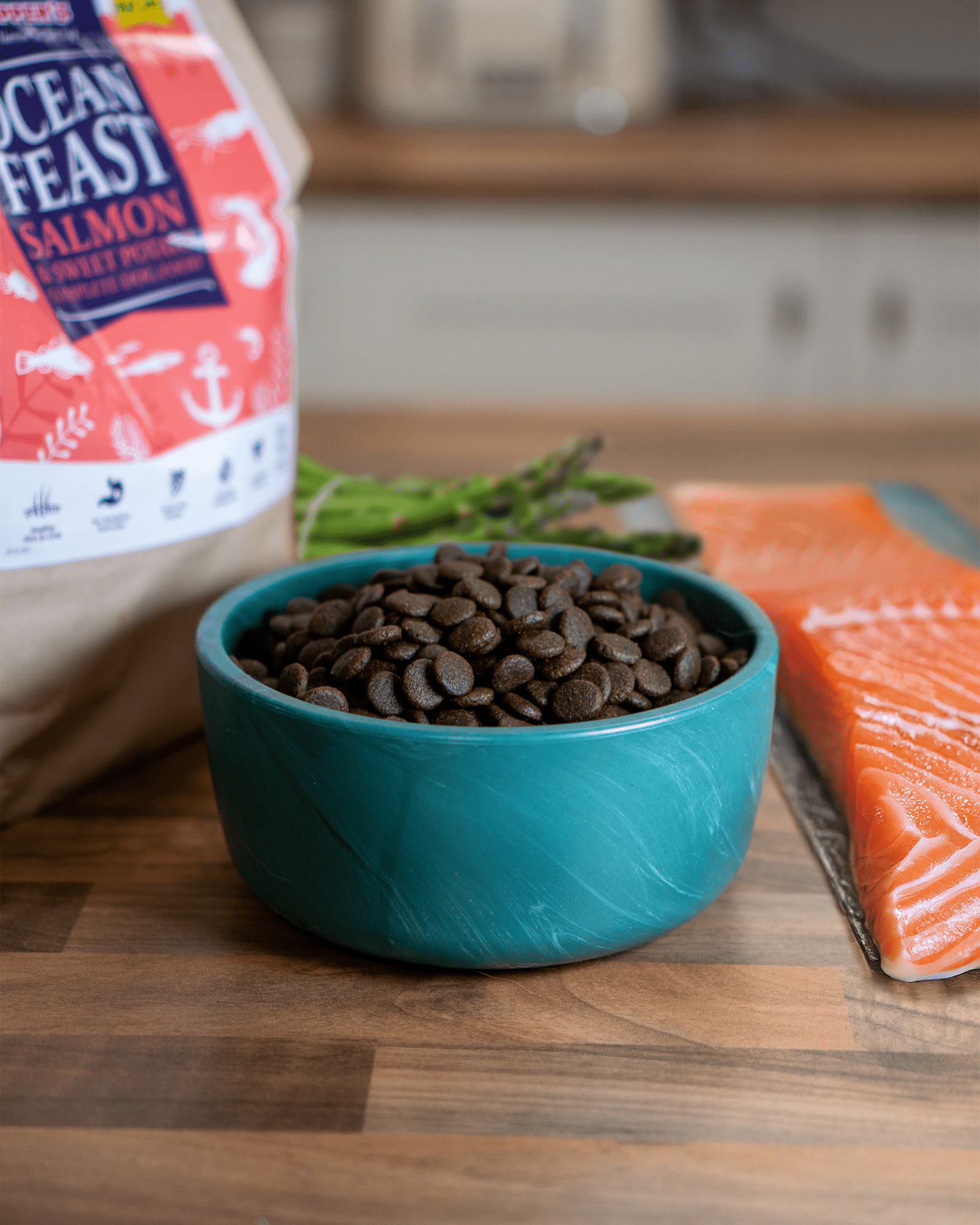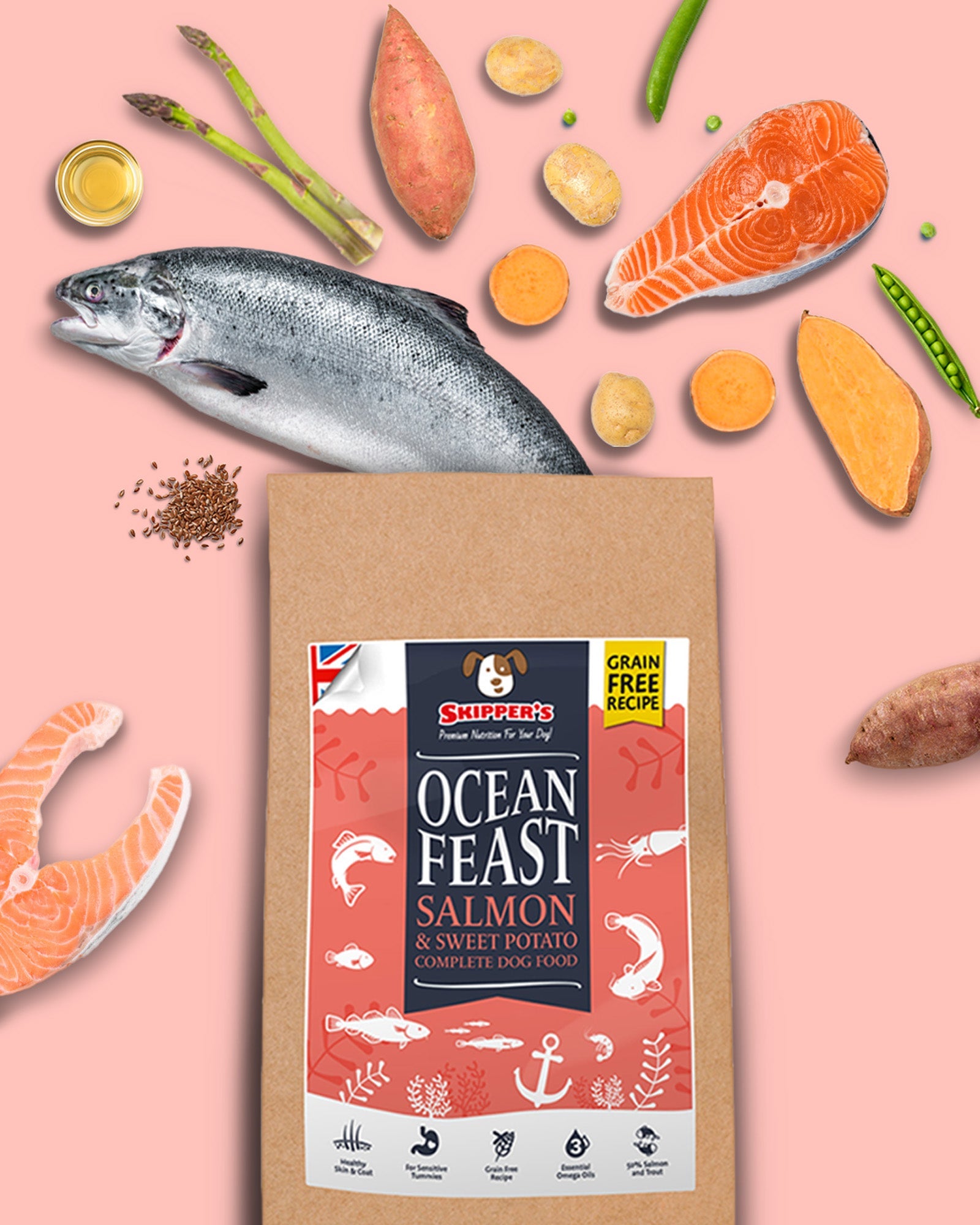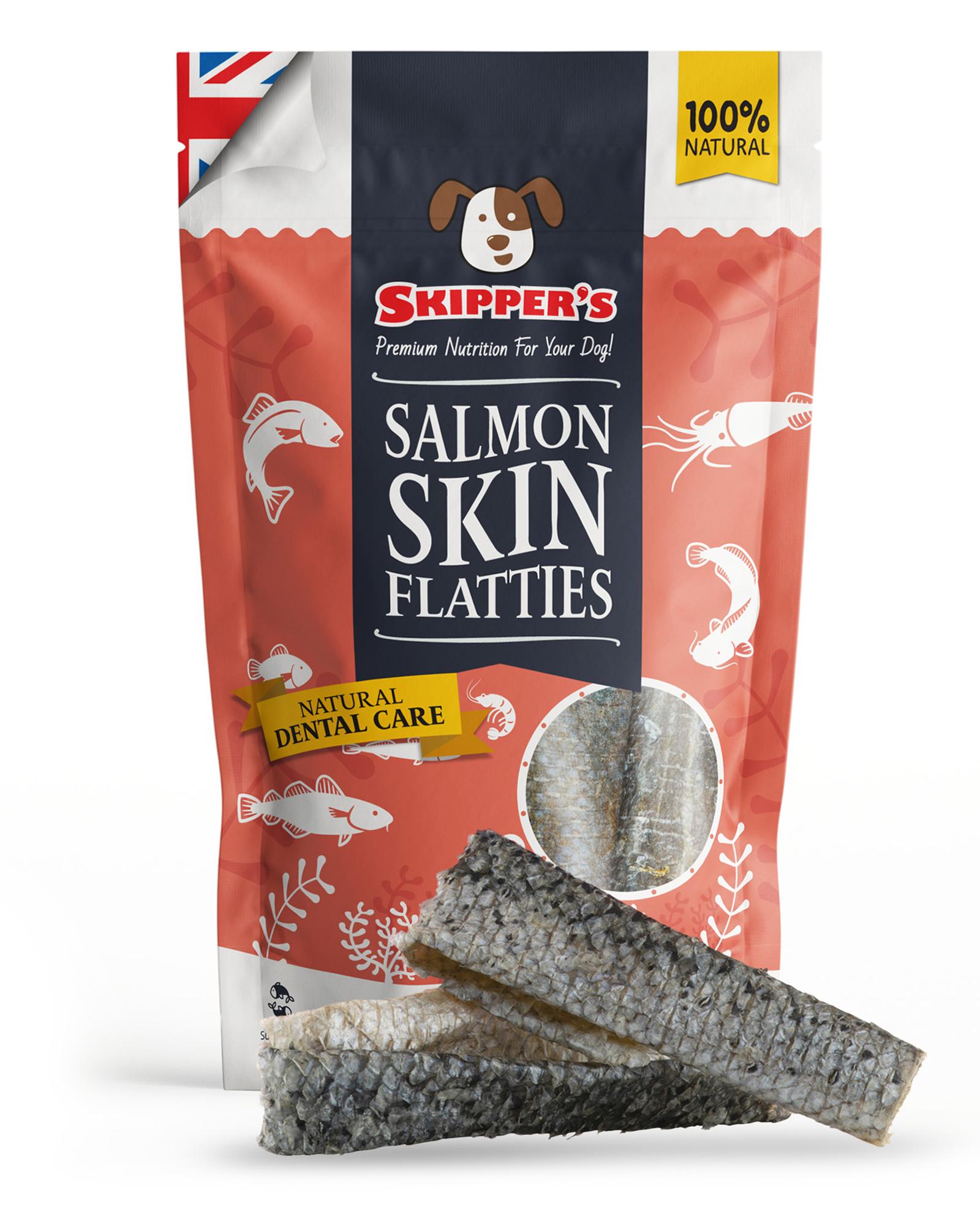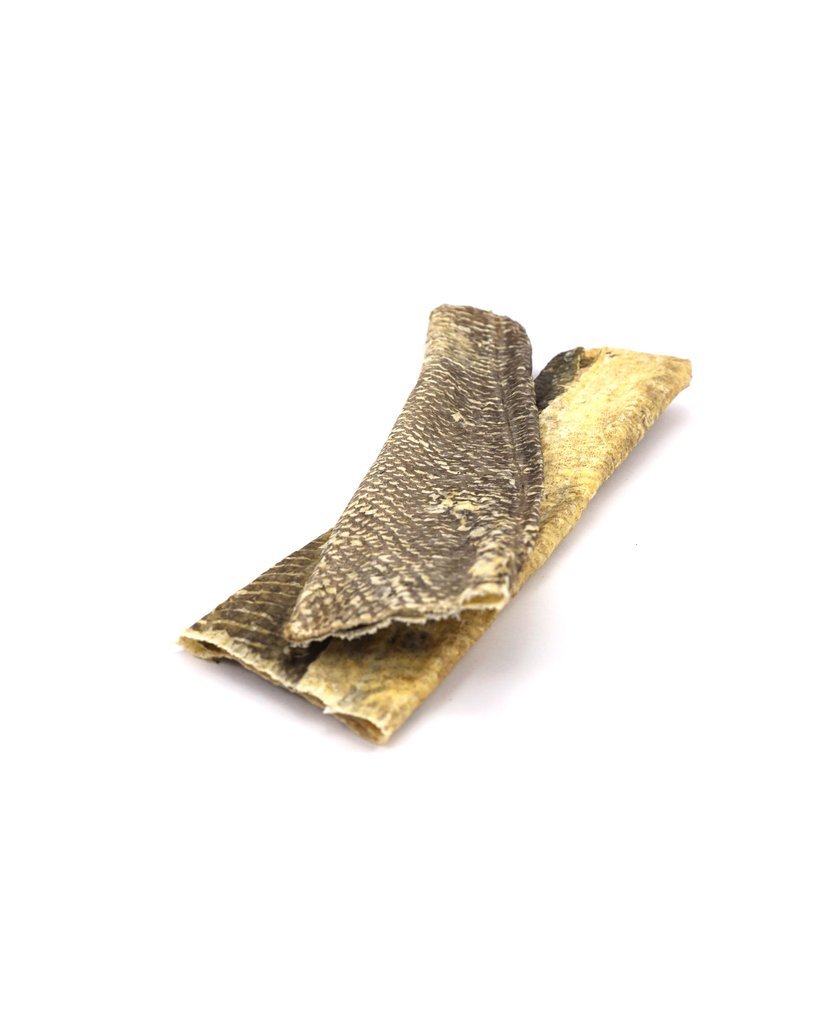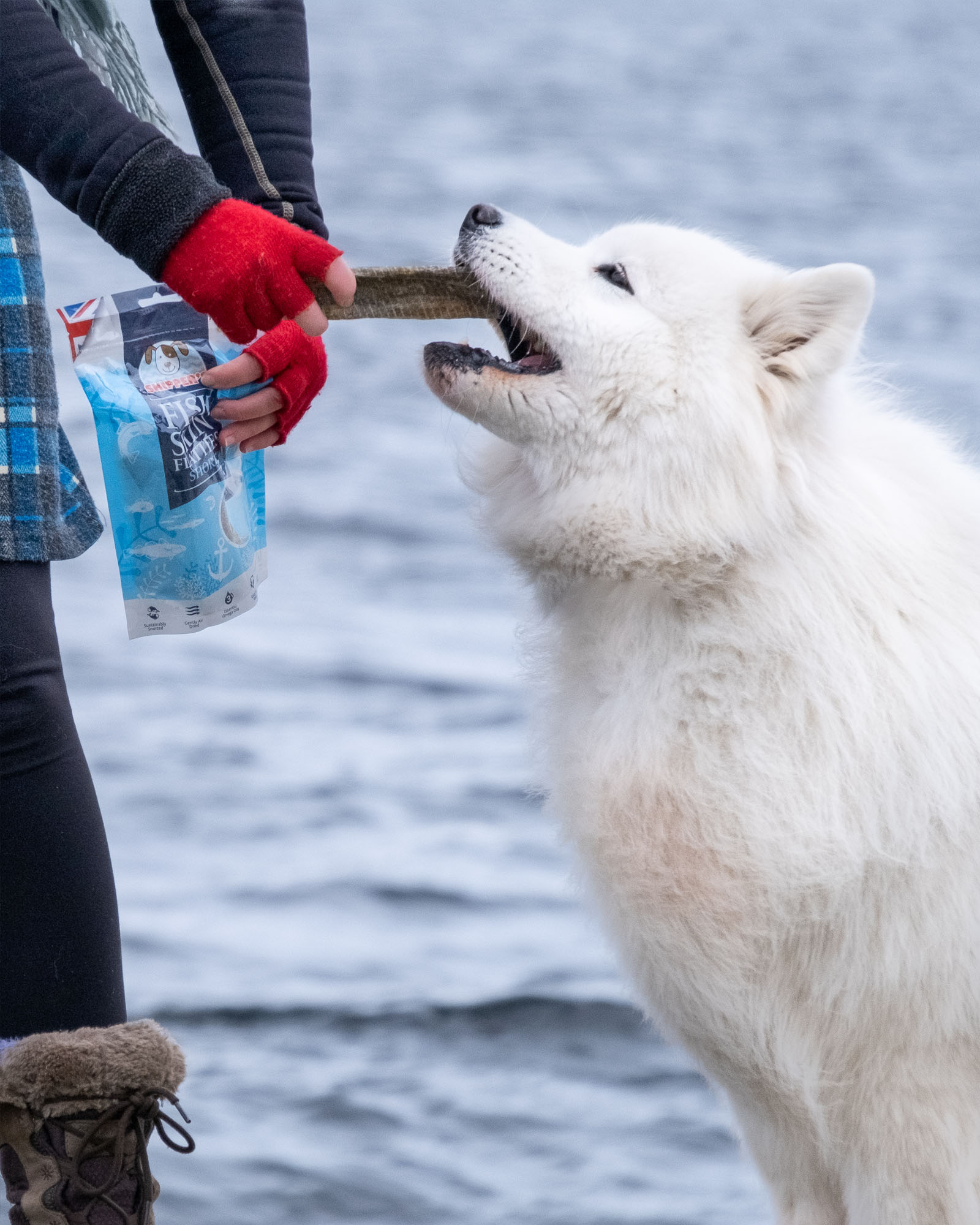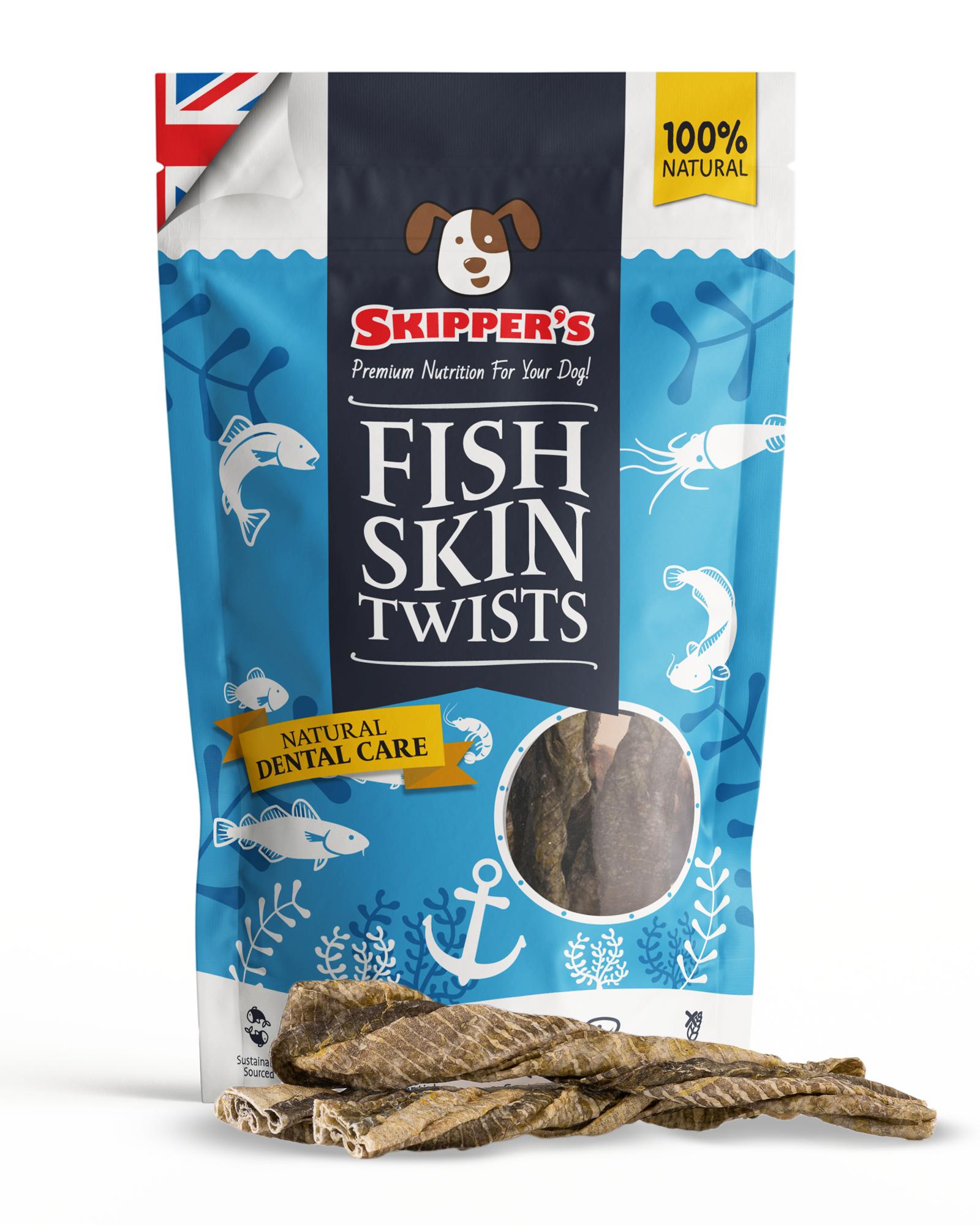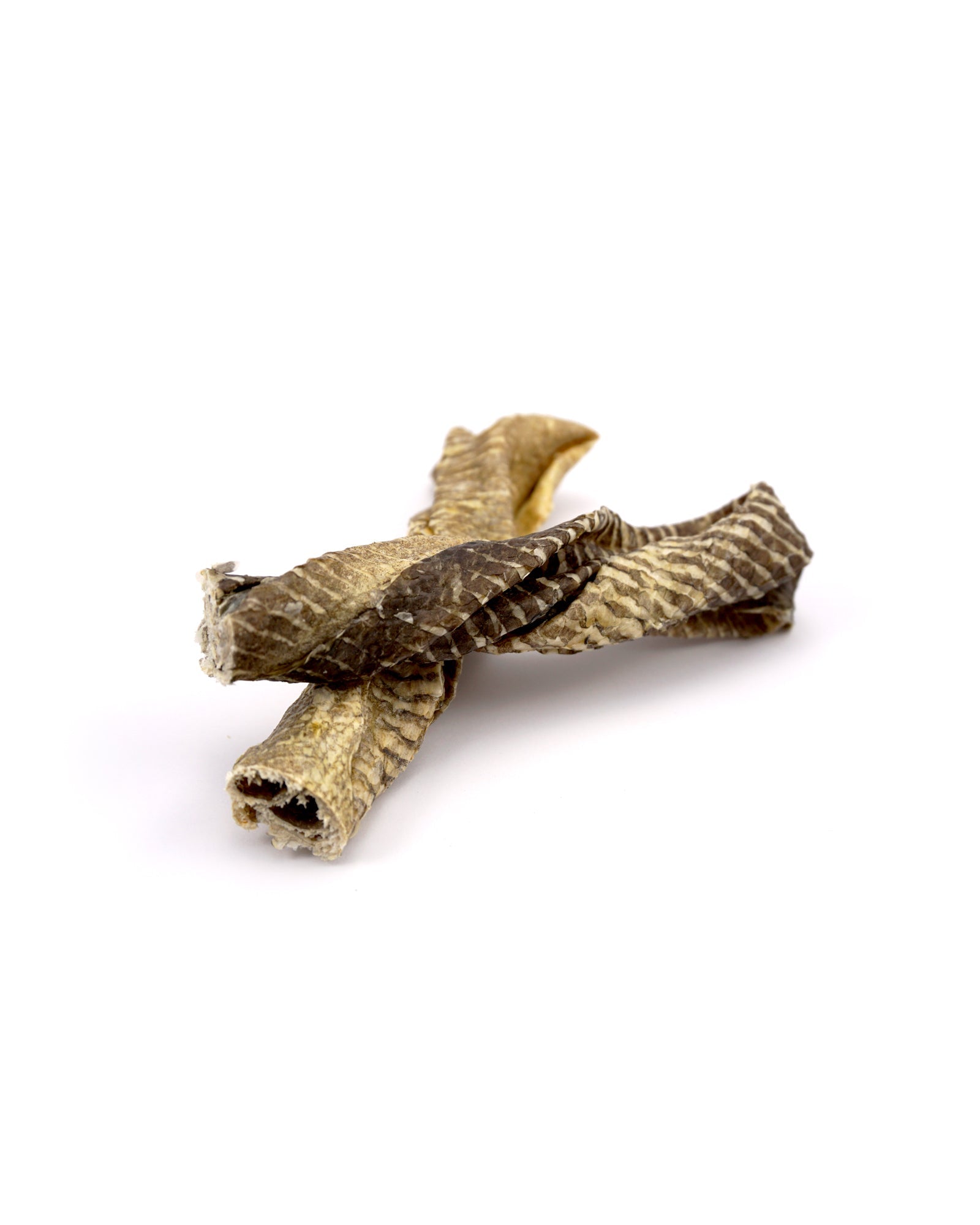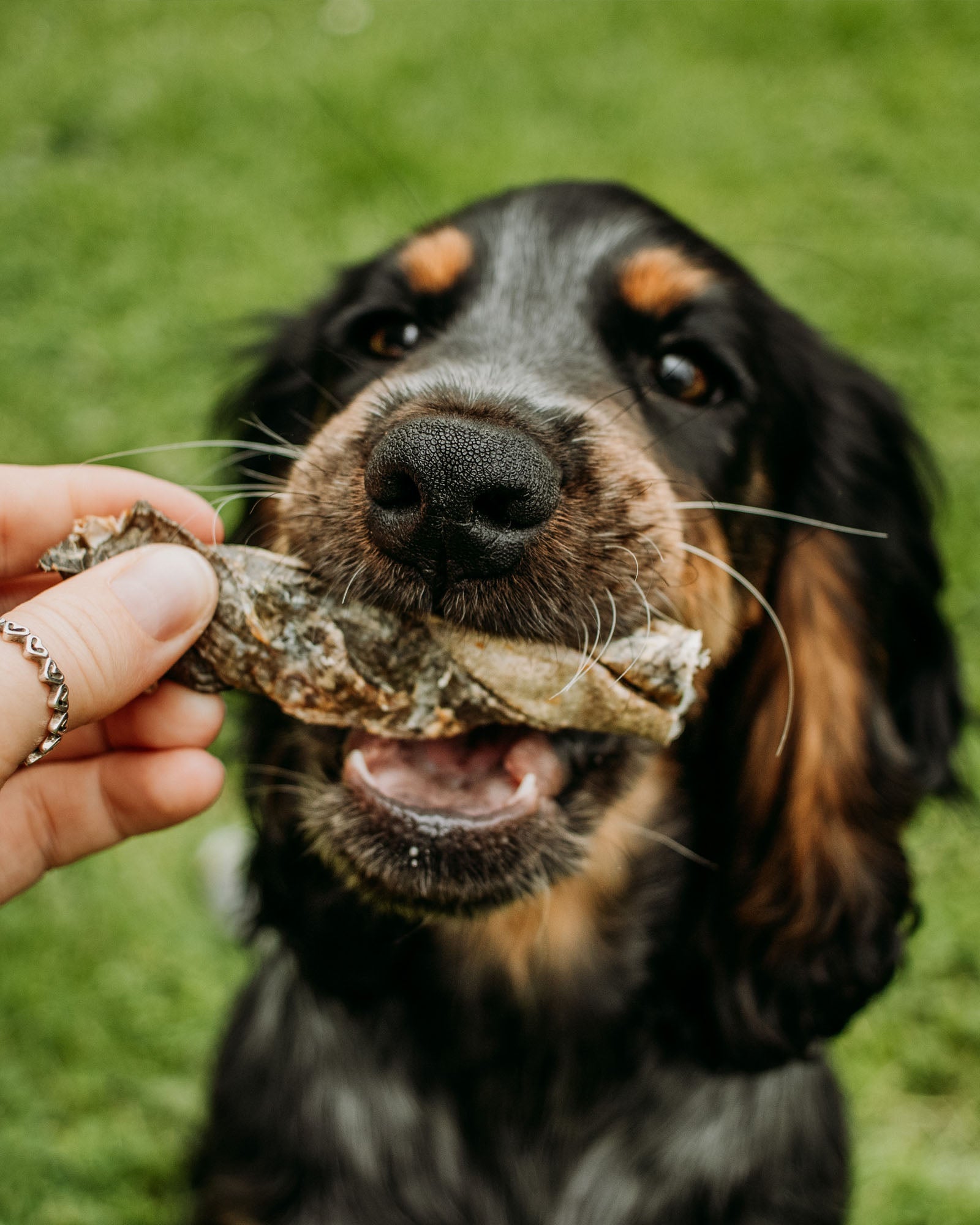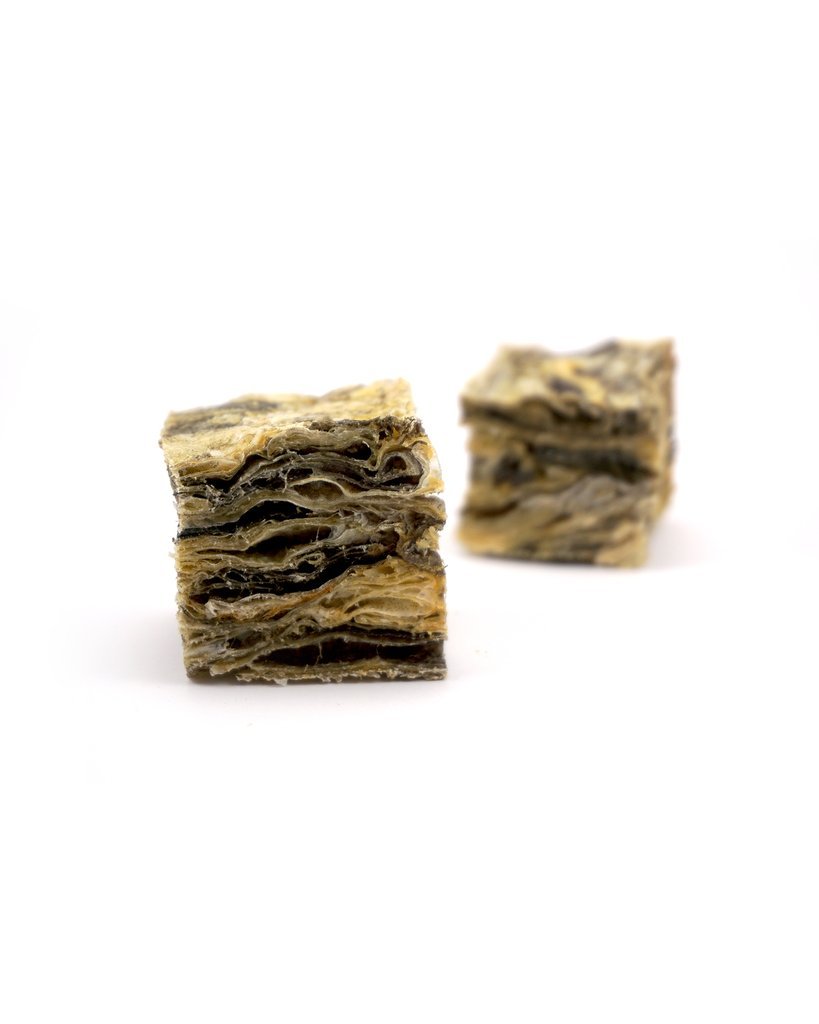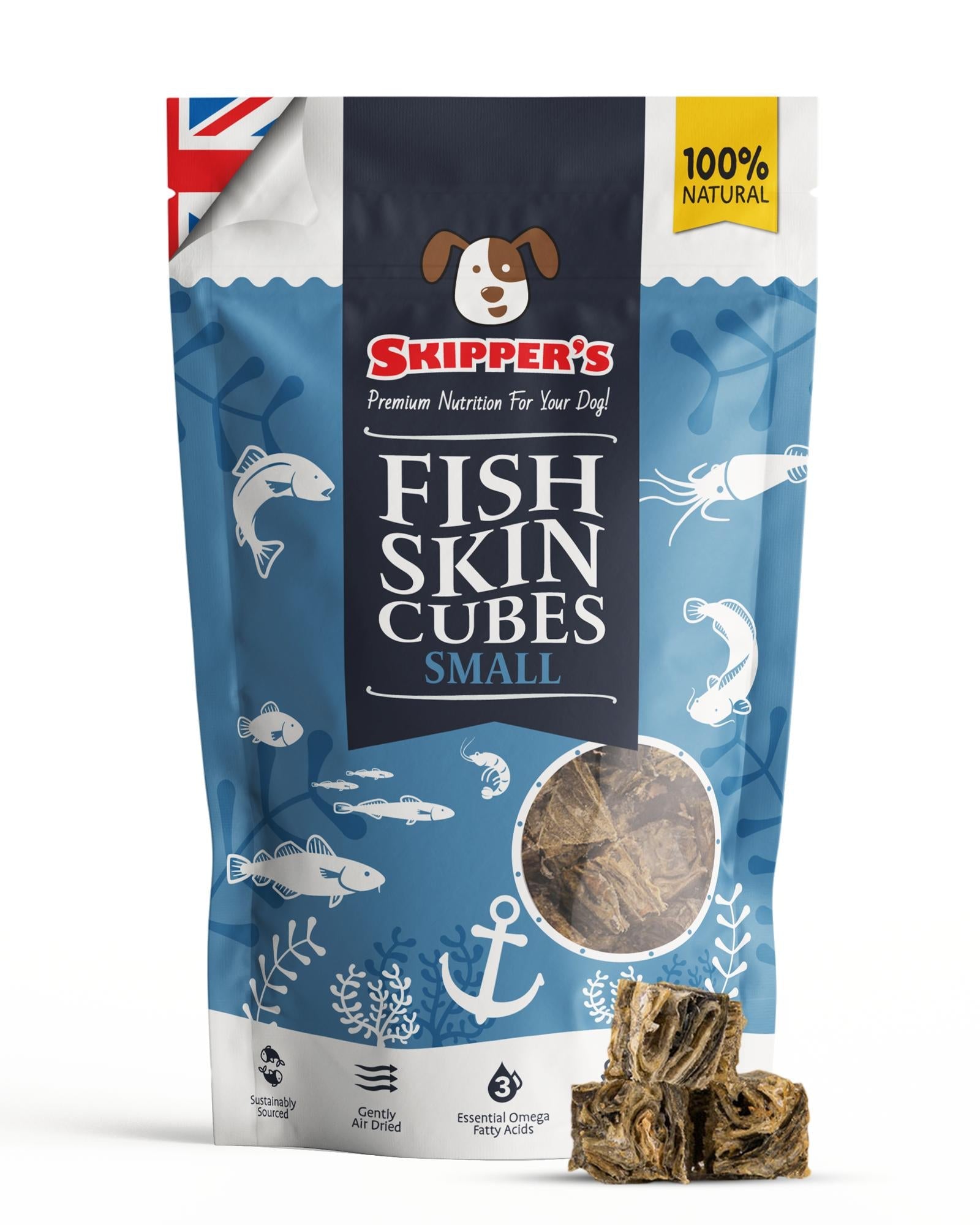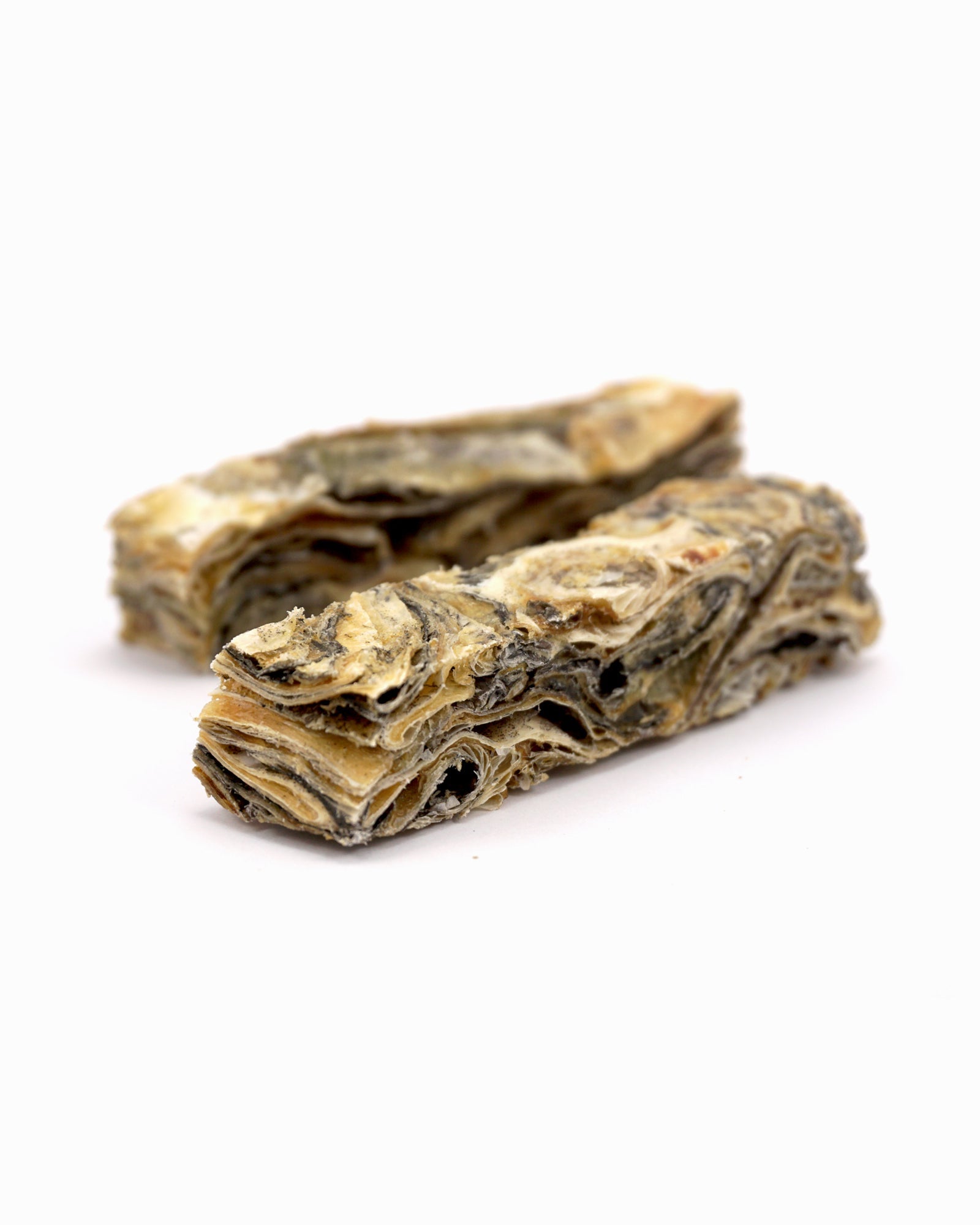If your dog is often having an unusual, negative reaction to their food or treats, it could be that they are experiencing a food allergy or food intolerance. But how can you tell the difference between the two? What symptoms should you look out for, and which ingredients should you avoid?
Well, signs of food allergies and food intolerances in dogs can appear through symptoms such as itchy, red, inflamed skin, wind, diarrhoea, bloating, vomiting and weight loss. But these health issues can be avoided by looking out for harmful ingredients like food dye and corn syrup.
What is the difference between a food allergy and food intolerance in dogs?
Before we begin, it's important to recognise the difference between your dog having a food allergy and a food intolerance. The most recognisable difference between the two is that the main symptoms of dog food allergies are that they are skin-related, while dog food intolerances are more digestive-based.
Additionally, when it comes to treatment, allergen elements must be permanently avoided, whereas for intolerances, only the trigger ingredient must be avoided. But which specific symptoms should you look out for?
Recognising the symptoms of dog food allergies and food intolerances

Like with most health concerns, it’s important to make sure you’re keeping an eye out for any potential symptoms to be able to recognise the issue as quickly as possible. When it comes down to food allergies and food intolerances within dogs, there are a fair few to be aware of.
Itchy, red, inflamed skin
Especially on their feet, ears, face, chin, stomach or groin.
Excessive wind & diarrhoea
We all know our dogs can get the toots sometimes, but a sudden increase in wind and discomfort may be down to the ingredients in their food.
Bloating & vomiting
It’s also best to keep an eye on how the food sits with your dog, making sure it isn’t causing them any pain or an upset stomach. In fact, Dr Austin Richman and Dr Brittany Lancellotti at Veterinary Skin & Ear have confirmed that up to 20% of dogs with food allergies experience both vomiting and diarrhoea!
Losing weight
If your furry friend begins to lose weight, this can also be a sign of an allergy or intolerance.
According to Vet Derm: “Only about 10-20% of all allergy cases in dogs and cats are due to food allergy. Despite food allergy not being very common in pets, food changes and evaluation of food allergy are often recommended. If a food change is recommended, it is not a diagnosis, but rather a test to assess for food allergy. Knowing this and performing a good food workup can help prevent frustration and confusion as a pet parent”
What ingredients should I look for in dog food?

Now we know the world of dog food can be scary at times. There are just so many to choose from, and with them all having different benefits and ingredients, how can you possibly be sure which is right for your dog without spending a fortune?
Well, the good news is, we’re here to break it down for you. First and foremost, we’d highly recommend avoiding the following ingredients where possible:
Corn Syrup
Often used as a cheap source of flavouring in both pet treats and food, making it extremely addictive for dogs. Despite this, Dial A Vet has confirmed that whilst it isn't toxic for dogs, it isn’t something they should consume regularly or in large amounts.
Food Dyes
Whilst they may be fun for humans, this ingredient does more harm than good for dogs. They’re completely unnecessary and only make the food / treat look more appealing to humans.
White Flour
This flour works to decrease and increase the blood sugar levels of your dog and only keeps them full for a short period of time.
Meat By-Products
Avoiding unspecified meats is a must! Meat Meal itself actually acts as a filler and contains little to no protein at all!
Adam Docherty, from Pet Know How, recently stated, in an article on The Yorkshire Post, that it's better to look for dog foods that specify the type of meat used, such as a chicken dog food or "beef", rather than generic "meat by-products".
Vegetable Oil
When added to processed pet foods, this ingredient comes in excessive amounts, and as it contains Omega-6, too much of this can actually trigger inflammation.
Farmed Salmon
Whilst Salmon is FANTASTIC for dogs, the wrong kind of Salmon can actually be toxic for your dog. Unlike natural Salmon, the farmed variant is NOT nutritious and contains several harmful chemicals like mercury and pollutants.
When it comes to sustainably sourced fish, a case study has confirmed that "fish allergies are relatively uncommon in dogs". This is because only 2% of the 297 dogs tested experienced symptoms affected by fish!
But, unfortunately, that’s only to name a few. Luckily, there are plenty of food AND treat options out there that are 100% natural and are free from any harmful additives and preservatives.
Safe dog food options to try
We may be biased, but Skipper’s dog food is a superior choice when wanting to avoid ingredients that may trigger food allergies or food intolerances! Catering for dogs of all ages, sizes and breeds, Skipper’s Pet Products has both food and treats for every dog. PLUS, there are two BRAND-NEW options to choose from!
How to get a food allergy or intolerance diagnosis for your dog?

Getting a food allergy or food intolerance diagnosis starts with a physical exam being conducted by a vet. This is done in aid to rule out any potential other conditions. Then, your vet will typically ask more about your dog's diet and any symptoms you have recognised thus far.
From here, an elimination diet trial will begin. This involves keeping your dog on a strict, instructed diet for a total of 8-12 weeks. There are several diets to choose from, however, your vet will advise on which is best for your dog. During this trial, any potential symptoms will need to be closely monitored by creating a detailed food diary.
Finally, at the end of the 8-12 weeks, a food challenge will be put into place. This is where you’ll slowly reintroduce old foods back into your dog's diet one by one. This will only be implemented if the previous symptoms are resolved by the food diet trial. However, if the original food causes yet another flare-up, your dog will be diagnosed with a food allergy.
With all that being said, we’d highly recommend seeking professional advice from your vet for a full deep dive into your dog's food allergies and food intolerances, to receive an official diagnosis.


